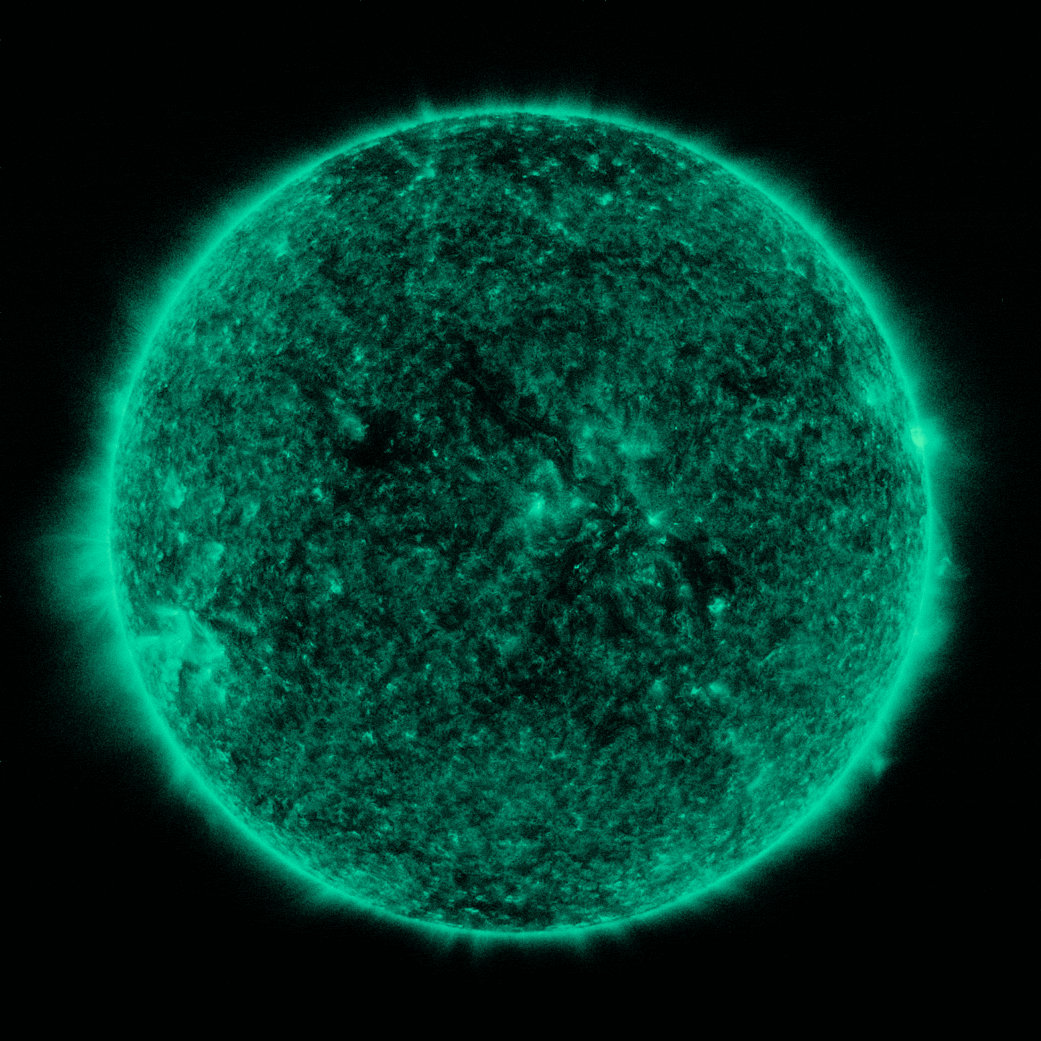Moon Photobombs the Sun in Amazing View from NASA Spacecraft

While keeping an eye on the sun's weather, a NASA spacecraft caught an awesome view of the moon passing across the face of the sun last week.
The Oct. 19 lunar transit — called a partial solar eclipse because only part of the sun was obscured — lasted about 45 minutes, between 3:41 p.m. and 4:25 p.m. EDT (1941 and 2025 GMT). The event was caught on camera by NASA's Solar Dynamics Observatory (SDO). At peak eclipse, the moon covered about 26 percent of the sun's surface. [The Sun in HD: Amazing SDO Mission Photos]
"The moon's shadow obstructs SDO's otherwise constant view of the sun, and the shadow's edge is sharp and distinct, since the moon has no atmosphere which would distort sunlight," NASA wrote in a statement.
The pictures are shown in false color, as SDO takes pictures of the sun in extreme ultraviolet light. This wavelength is invisible to human eyes, but it captures solar material that is heated to more than 10 million degrees Fahrenheit (5.6 million degrees Celsius.)
Lunar transits of the sun are a sort of solar eclipse in space for SDO. A solar eclipse occurs somewhere on Earth every 18 months. A total solar eclipse occurs when the moon completely blocks the sun (as viewed from Earth), but we're lucky to experience them at all. During totality, the moon appears to completely block the sun because the two objects appear approximately the same size in Earth's sky. That's because the sun is about 400 times bigger than the moon, and the moon is about 400 times closer to Earth than the sun is.
The most recent total solar eclipse in the U.S. occurred on Aug. 21, 2017, when millions of people from coast to coast journeyed to a narrow band spanning the contiguous U.S. to watch the spectacle. The next total solar eclipse, which will occur on July 2, 2019, will be visible from the southern Pacific Ocean, but the next one to be seen from the U.S. won't happen until 2024.
The main goal of SDO, which launched in 2010, is to improve scientists' understanding of magnetic changes on the sun. The observatory looks at the sun and solar activity to gain insight into phenomena such as flares, coronal mass ejections and eruptions.
Get the Space.com Newsletter
Breaking space news, the latest updates on rocket launches, skywatching events and more!
Follow us @Spacedotcom, Facebook and Google+. Original article on Space.com.
Join our Space Forums to keep talking space on the latest missions, night sky and more! And if you have a news tip, correction or comment, let us know at: community@space.com.

Elizabeth Howell (she/her), Ph.D., is a staff writer in the spaceflight channel since 2022 covering diversity, education and gaming as well. She was contributing writer for Space.com for 10 years before joining full-time. Elizabeth's reporting includes multiple exclusives with the White House and Office of the Vice-President of the United States, an exclusive conversation with aspiring space tourist (and NSYNC bassist) Lance Bass, speaking several times with the International Space Station, witnessing five human spaceflight launches on two continents, flying parabolic, working inside a spacesuit, and participating in a simulated Mars mission. Her latest book, "Why Am I Taller?", is co-written with astronaut Dave Williams. Elizabeth holds a Ph.D. and M.Sc. in Space Studies from the University of North Dakota, a Bachelor of Journalism from Canada's Carleton University and a Bachelor of History from Canada's Athabasca University. Elizabeth is also a post-secondary instructor in communications and science at several institutions since 2015; her experience includes developing and teaching an astronomy course at Canada's Algonquin College (with Indigenous content as well) to more than 1,000 students since 2020. Elizabeth first got interested in space after watching the movie Apollo 13 in 1996, and still wants to be an astronaut someday. Mastodon: https://qoto.org/@howellspace
